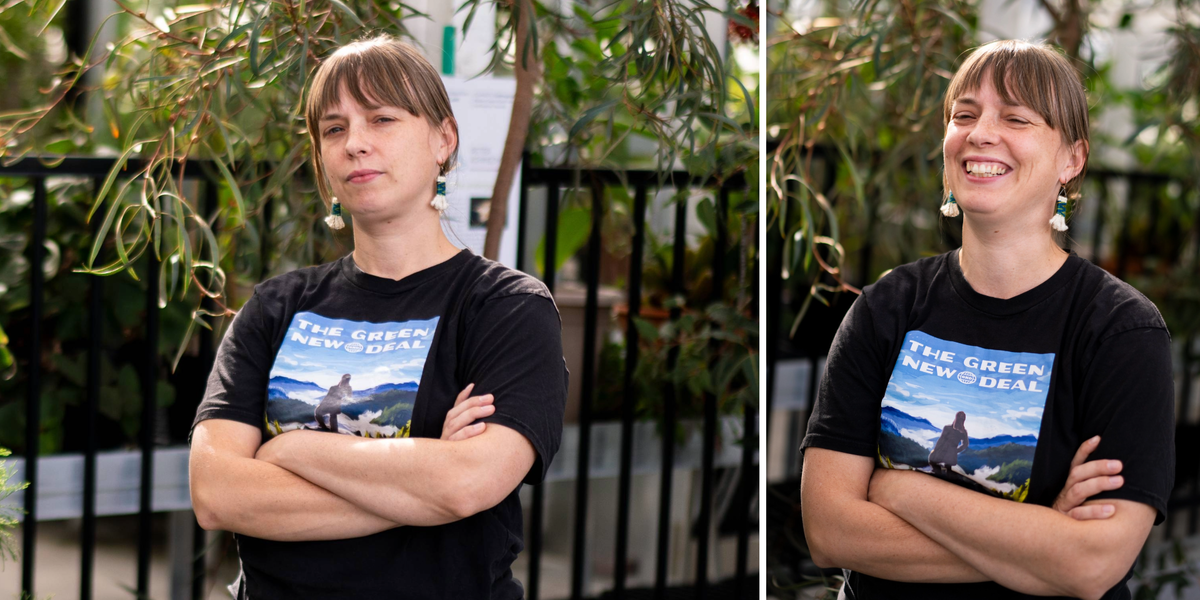
Sasha Wright has a confident, curious nature, traits that make her fearless when it comes to trying new things and venturing outside the prescribed path for an academic. “I have a deep need for my work to be joyful,” says Wright, who says she’s been known to sit cross-legged on a table while leading discussions in her biology courses. It’s an attitude she plans to bring with her in her new role as associate professor in the College’s Department of Ecology, Evolution and Behavior. “I’m a very serious academic, but that doesn’t have to come at the expense of being kind and silly.”
Serious, indeed. In the span of 10 or so years, Wright taught basic biology to fashion students at SUNY’s Fashion Institute of Technology, served as a visiting professor at Sarah Lawrence University and Bard College, conducted ecological research through a fellowship in Germany, and grew an impressive graduate and research program in her six years at California State University Los Angeles. Wright’s out-of-the-box scientific thinking led her to make unique research decisions and quickly attracted cutting-edge scholarly attention.
“A lot of the interest I get for my research is related to figuring out how to manipulate humidity in outdoor experiments, because no one has done that before,” says Wright. It’s hard to replicate humidity, especially in open-air environments. One research experiment in Switzerland gets close by implementing giant mist-sprayers. But mist is not quite the same as humidity, and humidity itself can be difficult to control because it’s super related to temperature and other variables. So Wright worked with a team to come up with a solution, and is installing a new model of her humidity experiment right here on the Saint Paul campus.
“We take what are called atomizer plates, and submerge them in big bins, and they create a fog,” says Wright. The fog is then pumped into open top chambers through PVC pipes. “It’s really cute, too. Very charismatic looking.” Think dew or mist on a gloriously sunny morning.
Though her humidity experiments could be used to study ecological principles from a variety of perspectives, the one Wright is most interested in is called facilitation. She’s always been interested in positive interactions between plants. “Under any conditions where individual plants are humidifying and cooling the air, you get all this potential for positive effects on their neighbors.” Some species are really sensitive to drought, but if their neighbors are making the environment under the canopy more hospitable – well, it benefits everyone.
Joy is the fuel for Wright’s hard-earned accomplishments. But staying true to her moral compass keeps her focused on her long-term goal, seeing people in healthy relationships with Earth – and each other. Even now, she’s always looking for opportunities to make her teaching and research programs approachable and equitable.
“Before college, I really wanted to go into environmental law,” says Wright, who says she comes from a long line of lawyers. Her maternal great-grandfather was the first Native American civil rights attorney in Alaska, while several of her paternal relatives are judges and lawyers from the east coast. “It was the 90s, and the rainforest was disappearing. I really, really wanted to fight for this, and law seemed like the way to do it.”
At the time, Wright worried she lacked the memorization skills to become a scientist. But when she moved to Beloit, Wisconsin on a scholarship, she fell in love with her biology and plant physiology classes. Several conversations with her key mentor, Yaffa Grossman, changed her perspective. “She told me that my skill set – quantitative, analytical, creative – was great, and that not every scientist is great at memorizing. She’d say things like ‘you don’t need to be a systematist, you can be an ecological theoretician.’” The introduction of new concepts and career paths made a big impression on Wright, and ultimately influenced her teaching philosophy.
“When it comes to coursework, I try to make sure that the really important stuff happens in the classroom with me, so that if [my students] have a million demands on their time, they're not fundamentally missing out on key experiences,” says Wright. Wright analyzes written responses to assess students for perceptiveness, creativity, analytic skills and more – making notes of each student’s strengths and weaknesses to adjust her coursework. The curriculum is designed to resonate with students of all walks of life, including those with jobs and demanding home lives.
When she began to search for teaching and research opportunities in Minnesota, she did so with an open mind. “There were a lot of directions I could have gone,” says Wright, who shares a love of both teaching and research. Given its reputation as a global leader in ecology research and access to long-term ecological experiments at Cedar Creek Ecosystem Science Reserve, the University of Minnesota turned out to be a perfect fit. “There’s no denying how exciting this place is for studying biodiversity. I’m really, really excited to build a diverse team of people to work on this research with.” – Adara Taylor